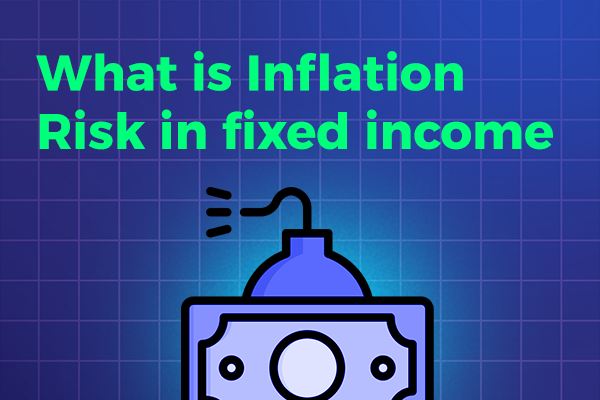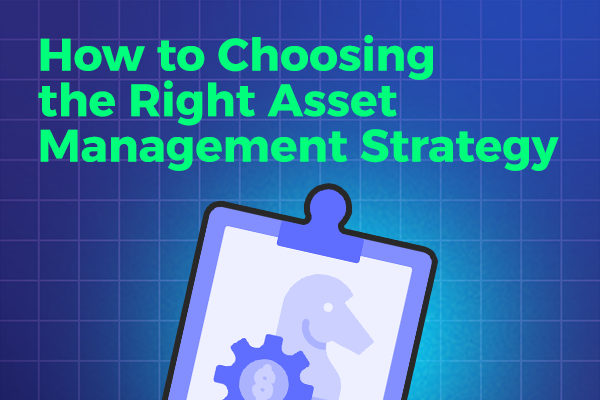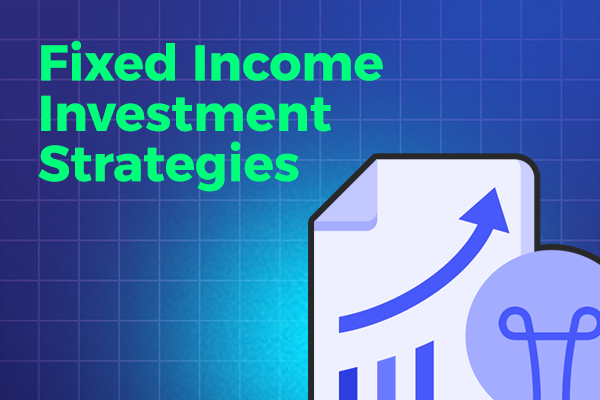As an investor, it is essential to understand the concept of inflation risk, especially when investing in fixed income assets. Inflation risk refers to the threat of loss of purchasing power due to rising inflation rates.
When inflation increases, the value of money decreases. This means that the money you invested in fixed income assets may not have the same value in the future, making it harder to buy the same goods and services that it could in the present. This is where inflation risk comes into play, as it affects the real returns on your investments.
Key Takeaways
- Inflation risk is a significant risk for investors in fixed income assets.
- Inflation risk refers to the possibility of losing purchasing power due to rising inflation rates.
- Inflation risk can affect the real returns on your investments.
Understanding Inflation Risk
Inflation risk is the potential for loss of purchasing power due to the effects of inflation. It is a risk that investors in fixed income securities face, as inflation erodes the value of the money they receive from their investments.
Inflation is the rise in the price of goods and services over time. When inflation occurs, the purchasing power of money decreases, as the same amount of money can buy fewer goods or services. This is because the prices of goods and services increase, while the value of money remains constant.
The effects of inflation can impact fixed income securities in various ways. One of the main impacts of inflation is on interest rates. As inflation rises, central banks tend to raise interest rates to control inflation. This results in a decline in the value of fixed income securities, as their yields become less attractive.
Causes of Inflation
Inflation can be caused by a variety of factors, such as:
- Supply-side shocks, such as an increase in the cost of raw materials or a decrease in the supply of goods and services.
- Demand-side pressures, such as an increase in consumer demand or a decrease in the supply of money.
- Structural factors, such as government policies or changes in the global economy.
Effects of Inflation
Inflation can have various effects on fixed income securities, such as:
- Reduced purchasing power, which can result in lower real returns for investors.
- Increased interest rates, which can decrease the attractiveness of fixed income securities.
- Changes in market conditions, which can result in a decline in the value of fixed income securities.
“Inflation is as violent as a mugger, as frightening as an armed robber, and as deadly as a hitman.”
– Ronald Reagan
Unlock Wealth: Sign Up Now for Smart Investing Success
Types of Fixed Income Investments Affected by Inflation Risk
While inflation risk can impact various types of fixed income investments, there are specific categories that are particularly vulnerable. These include:
| Type of Investment | Description |
| Treasury Bonds | Fixed income securities issued by the US government, which are typically considered low-risk due to their guaranteed interest payments and principal repayment at maturity. However, inflation can erode the real value of these payments, reducing returns for investors. |
| Corporate Bonds | Fixed income securities issued by corporations, which are typically higher-yielding than treasury bonds due to the added risk of default. Inflation can impact the credit risk of these bonds and reduce their market value, leading to lower returns for investors. |
| Fixed Annuities | Insurance contracts that guarantee a fixed rate of return over a specified period. Inflation can erode the purchasing power of future payments, reducing the real value of returns for investors. |
| Certificates of Deposit (CDs) | Bank-issued savings deposits that offer a fixed rate of return over a specified period. Inflation can reduce the real value of returns, particularly if the interest rate is lower than the rate of inflation. |
It is important for investors to understand the susceptibility of their fixed income investments to inflation risk in order to make informed decisions about their portfolios. Diversification and investing in inflation-protected securities, such as Treasury Inflation-Protected Securities (TIPS), can be effective strategies for managing inflation risk in fixed income investments.
Mitigating Inflation Risk in Fixed Income Portfolios
Investors can use several strategies to mitigate inflation risk in their fixed income portfolios. Here are a few techniques:
Diversification
Diversification is essential to mitigate any form of investment risk. Investing in a broad range of fixed income securities with varying maturities, issuers, and credit ratings can help buffer inflation risk. It is advisable to spread investments across different segments of the bond market, such as government bonds, corporate bonds, and municipal bonds. This approach reduces the concentration risk in a single security or issuer.
Inflation-Protected Securities
Inflation-protected securities (IPS) are designed to shield investors from inflation risk. These securities are indexed to inflation, and their principal value adjusts regularly based on changes in the inflation rate. Treasury Inflation-Protected Securities (TIPS) are a type of IPS that offer a fixed interest rate plus inflation protection. TIPS are backed by the U.S. government and are considered to be a reliable and low-risk investment.
Short-Term Bonds
Short-term bonds are less susceptible to inflation risk as they have a lower duration. When interest rates rise due to inflation, the prices of long-term bonds decline more than short-term bonds. Therefore, holding short-term bonds reduces the impact of inflation on the portfolio. However, short-term bonds may have lower yields than long-term bonds, and investors should weigh this trade-off.
Managing Bond Duration
Bond duration measures the sensitivity of a bond’s price to changes in interest rates. In general, longer-term bonds are more sensitive to interest rate changes and, consequently, inflation risk. Therefore, investors can manage inflation risk by shortening the duration of their bond portfolio. By reducing the duration, their bond portfolio is less sensitive to changes in interest rates, reducing the impact of inflation.
By employing these strategies, investors can mitigate the impact of inflation risk on their fixed income portfolios. However, investors should note that no strategy can entirely eliminate inflation risk.
Assessing Inflation Risk: Measurement and Indicators
Assessing inflation risk is crucial to managing fixed income investments effectively. There are various indicators and metrics used to evaluate the potential impact of inflation on fixed income assets. Some of these include:
- Inflation rate: This is the most fundamental indicator for assessing inflation risk. The inflation rate measures the percentage increase in prices of goods and services over a specified period.
- Real yield: The real yield is the return on a fixed income asset after accounting for inflation. It provides an estimate of the purchasing power of the investment.
- Duration: The duration of a fixed income investment measures its sensitivity to changes in interest rates and inflation. Typically, longer duration assets are more vulnerable to inflation risk.
- CPI: The Consumer Price Index (CPI) is a measure of the average price level for goods and services purchased by households. It is commonly used to estimate the impact of inflation on fixed income investments.
Investors can also use inflation-protected securities, such as Treasury Inflation-Protected Securities (TIPS), as an indicator of inflation expectations. TIPS adjust their principal value based on changes in the CPI. If the CPI increases, the principal value of TIPS increases, providing investors with a hedge against inflation risk.
Overall, investors should consider a combination of these metrics and indicators to evaluate inflation risk and make informed investment decisions.
Implications of Inflation Risk on Portfolio Performance
Investors in fixed income portfolios are vulnerable to the effects of inflation risk. The erosion of the purchasing power of money over time can have a significant impact on portfolio performance, affecting both capital appreciation and income generation.
One of the primary concerns for investors is the impact of inflation risk on bond yields. As inflation rises, bond yields tend to increase, resulting in a decrease in bond prices. This can lead to a decline in the overall value of fixed income portfolios.
Inflation risk can also affect income generation in fixed income portfolios. As inflation rises, the purchasing power of interest payments on fixed income investments decreases. This can result in a decline in real income, which can impact overall portfolio performance.
Managing inflation risk in fixed income portfolios requires a proactive approach. One strategy is to include inflation-protected securities in the portfolio. These securities are designed to protect against inflation by providing returns that are indexed to inflation rates.
Diversification is another key strategy for managing inflation risk. By investing in a variety of fixed income assets, investors can spread risk across different types of investments and reduce exposure to inflation risk.
Investors should also pay attention to the maturity date of fixed income investments. Longer-term bonds are more vulnerable to the effects of inflation risk compared to shorter-term bonds. As such, investors should consider investing in a mix of short-term and long-term bonds to balance the impact of inflation risk.
In conclusion, managing inflation risk is crucial for investors in fixed income portfolios. By employing strategies such as diversification and investing in inflation-protected securities, investors can mitigate the impact of inflation risk on portfolio performance.
Conclusion
Understanding and managing inflation risk is crucial in protecting the performance and stability of fixed income investments. Inflation can erode the purchasing power of money over time, reduce income generation, and negatively impact capital appreciation.
Investors can mitigate inflation risk by diversifying their portfolios, investing in inflation-protected securities, and monitoring inflation indicators and metrics. It is essential to stay informed and proactive in managing inflation risk to safeguard financial stability.
By implementing effective strategies and techniques, investors can mitigate the impact of inflation risk and achieve their long-term financial goals. Stay vigilant, stay informed, and stay proactive in managing inflation risk.




